
When the warmer weather starts to arrive, large green or brown bugs known as stink bugs may appear, crawling on walls, or flying around the windows in your home.
If you live in a drafty old house, you’re likely seeing them just about everywhere, now that the sun has become brighter and stronger.
If you don’t know what they are, you might swat at them, or step on them, but as soon as you do, you’ll know what you’re messing with, thanks to the horribly unpleasant smell.
These pesky little creatures stay hidden throughout the winter, but when springtime arrives, they start to move around, looking for a way out, and in the process, they often come inside one’s home. They also seek out hiding places in attics, crawl spaces, and inside of wall voids.
The bugs are rather big and have an oval shape – and, are quite aptly named, from the odor of the chemical that’s produced in glands that are on their abdomen – that awful smell is believed to be a defense against predators. As you probably know, it does a pretty good job.
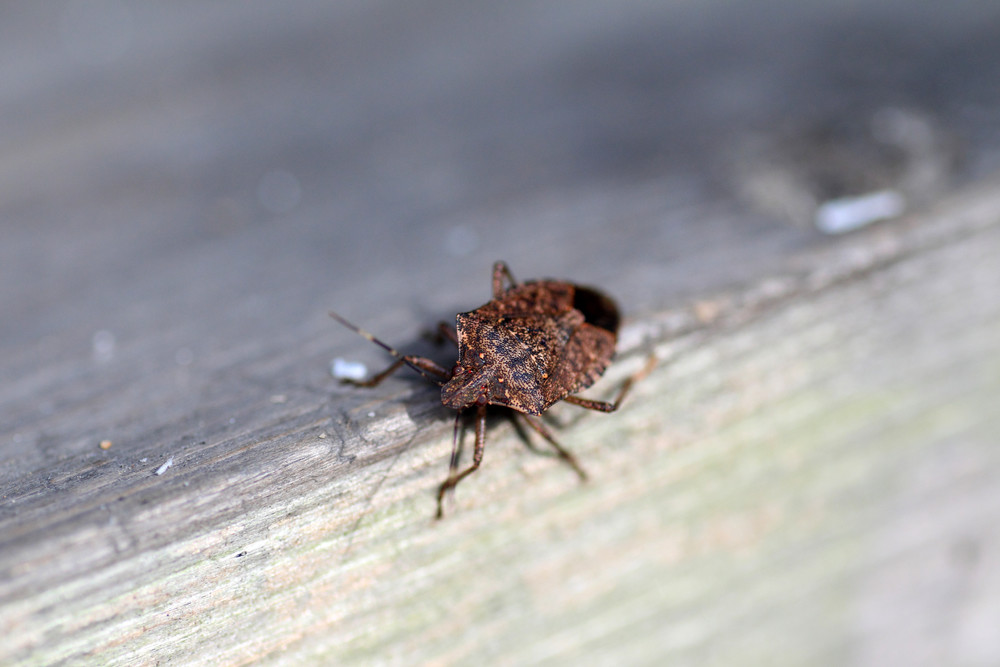
When it comes to stink bug invasions, the most effective method for controlling them is prevention.
Ideally, you should make a thorough inspection of the exterior of your home before they’re allowed to overwinter. Check doors and windows for cracks and torn screens, and consider using weather stripping to help seal any gaps underneath outside doors. Also inspect attic and crawl space vents for torn or missing screens.
Of course, if you’re past the prevention point, what do you do?
Obviously, swatting and stepping on them is something best avoided, and pesticides come with their own set of, often worse, problems – after all, you don’t want harmful chemicals invading your home either.
Many people decide to vacuum stink bugs away, but that may cause them to release their foul stench in the vacuum cleaner.
While you might think you’re out of luck – there are some effective, natural options you can use for getting rid of those annoying, smelly stink bugs.
1. Seal all access points now
If you haven’t already, the first thing you need to do is seal up all access points so no more stink bugs get in. Fill up all of those cracks and gaps, as mentioned previously, consider exhaust fans, ceiling lights and the backsides of baseboards too.
2. Remove obvious stink bugs
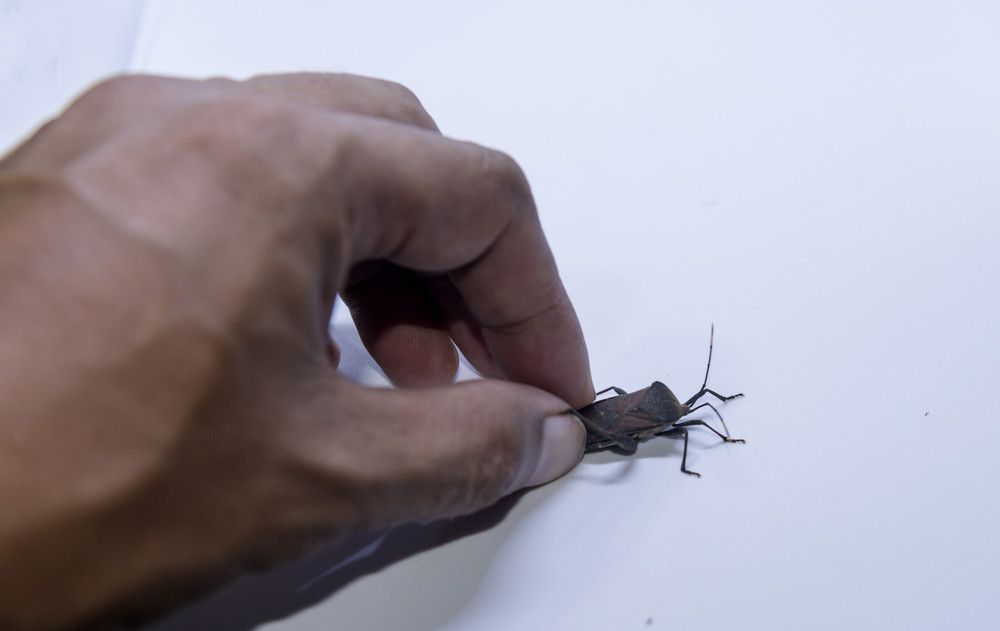
Anytime you see a stink bug, remove it by picking it up in a paper towel or plastic bag and flushing it down the toilet. Be extra careful not to squeeze it, or that bad odor will be released.
If you’re worried about them wriggling around, apply some hairspray on them directly which will render them powerless. Make sure to shoot them at a close and direct angle, then you can easily pick them up with your plastic bag or paper towel to flush them down.
3. Make a garlic spray
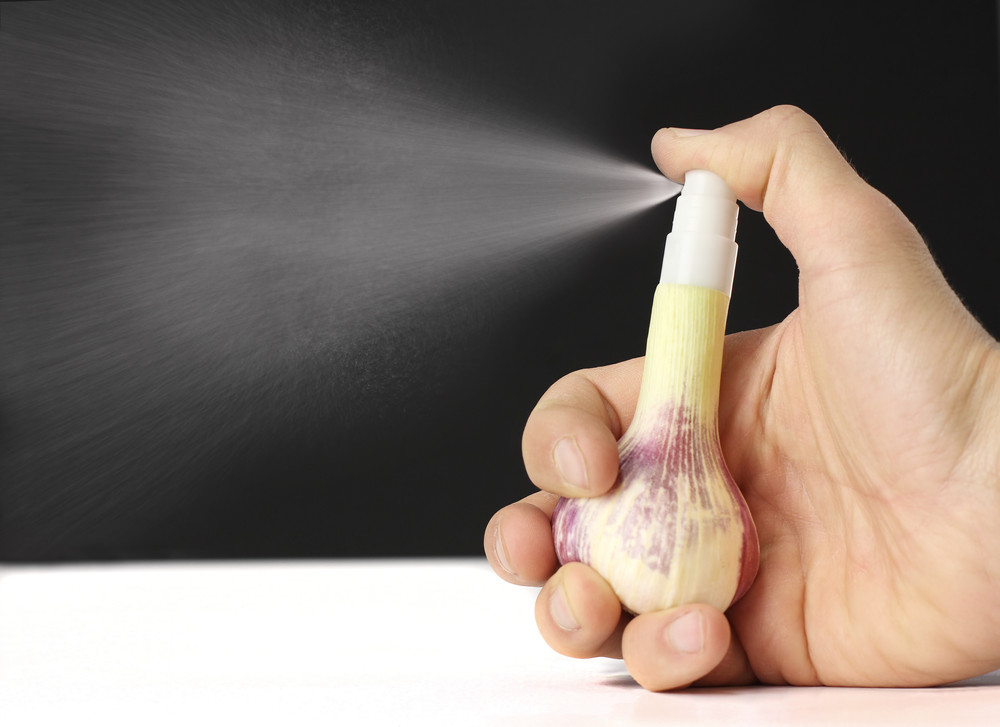
The acidity and smell of garlic actually offends stink bugs and will keep them far away.
Make a powerful stink bug-fighting solution by combining 4 teaspoons of garlic powder with 16 ounces of water in a spray bottle. Spray around doorways, windows, and any other place stink bugs might enter.
4. Mix up a peppermint spray
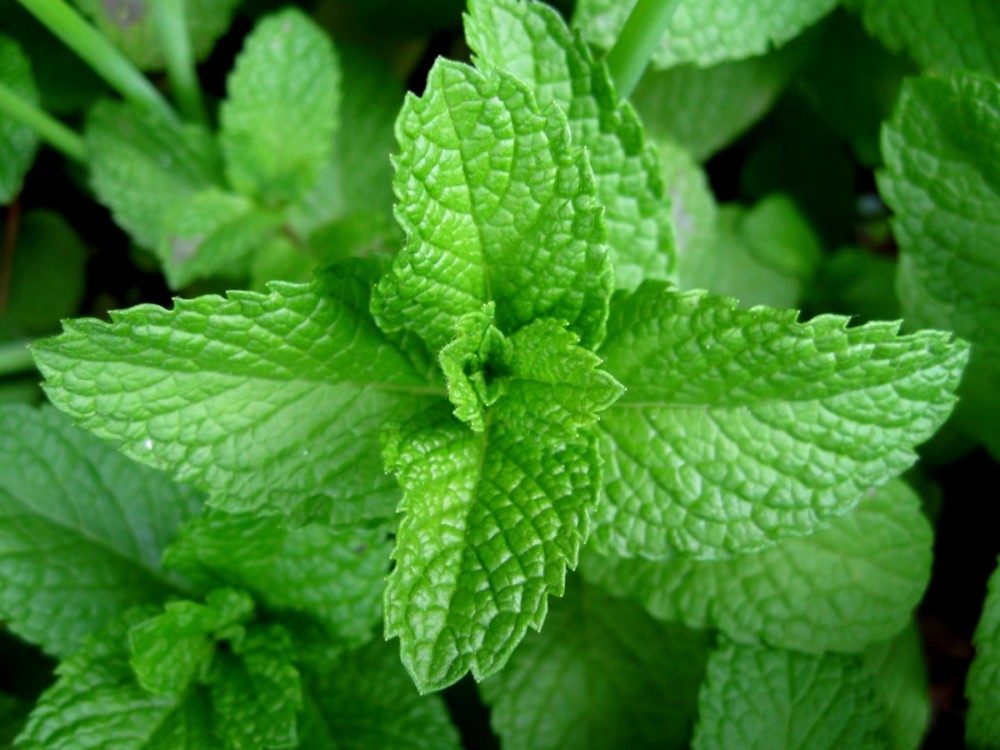
You can use mint just like you would garlic. While we may enjoy the scent of this fragrant herb, it repels stink bugs.
All you have to do is add 10 drops of peppermint essential oil to 16 ounces of water in a spray bottle, and spray it like you would the garlic solution, around doorways, windows, and other entryways.
5. Soap and water
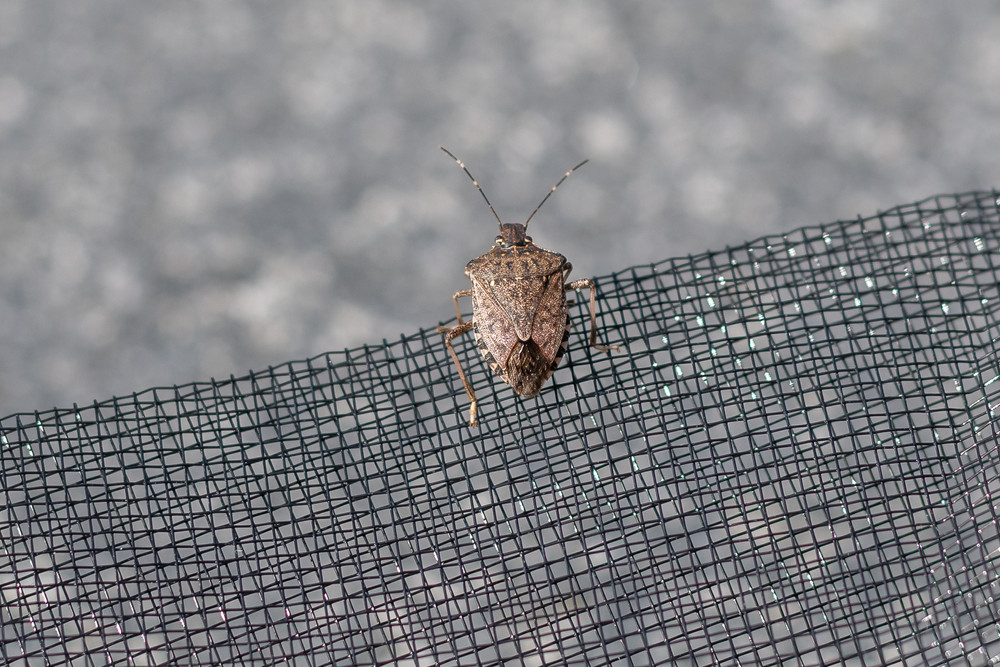
Soap and water may be basic, but it’s a very effective remedy, especially if you’ve got stink bugs crawling on your curtains or walls.
Simply fill up a half-gallon or 1-gallon straight-side container about a quarter full of water, and then add a teaspoon of dish soap or laundry soap to it.
When the bugs are disturbed, they typically drop down, so you can place the bucket underneath where they are and knock them into the bucket from walls, curtains, screens, etc. with a broom or other brush type of tool. They’ll be unable to escape once they’ve dropped into the container and will ultimately drown.
6. Vacuuming
While vacuuming up stink bugs will leave your vacuum rather stinky if you suck them up into a bagless vacuum, if you’ve got a bad problem with the critters, many people who live in some of the worst-afflicted areas invest in a small wet/dry vac that they use solely for sucking up stink bugs.
Right after gathering them up, you can dump the contents of the vacuum into a large garbage bag and seal it up tightly until garbage day – if you find more in the meantime, you can simply open up the bag again and add more.
Another vacuum option to try is wrapping a knee-high stocking around the outside of the vacuum tube. You’ll secure it by using a rubber band, and then you’ll stuff it into the tube. Stink bugs will get trapped inside the stocking and won’t enter the vacuum filter. When you turn off the vacuum, carefully remove the stocking, holding the end closed, and then dump the captured stink bugs into a container of soapy water, as noted previously, to kill them.
7. Neem oil
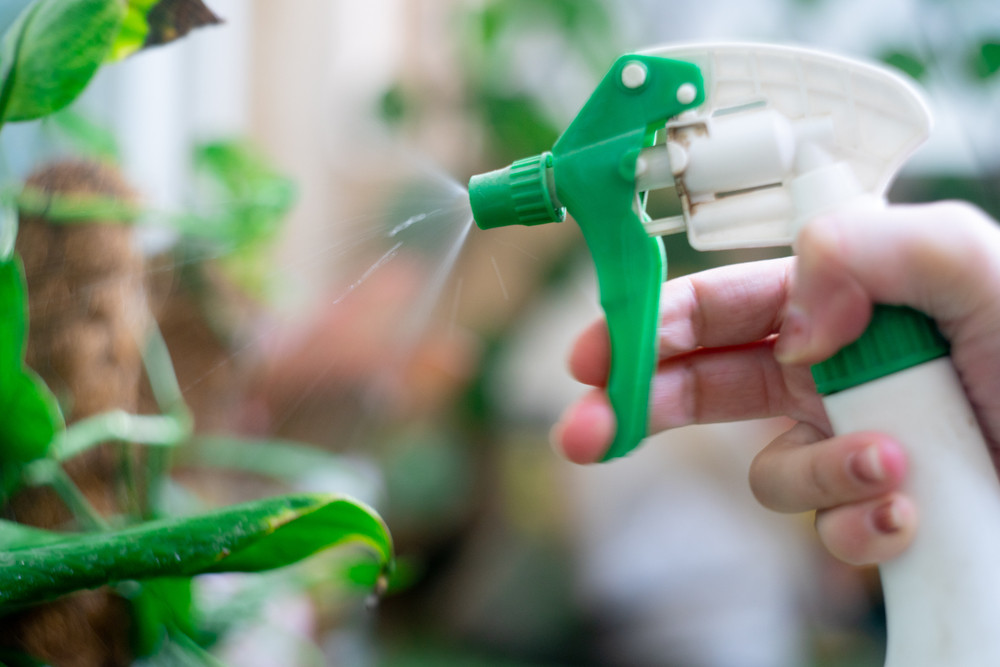
If you have a garden, and you have stink bugs in your home, you likely have stink bugs that have invaded your garden too.
Using a Neem oil solution won’t harm your plants, but it will help keep stink bugs away from them, and you can use it in your home to get rid of them too.
To do so, combine two tablespoons of Neem oil with about a half cup of water in spray bottle.
Be sure to spray your window panels, doorways, etc. in addition to plants in your garden and anywhere else you might find stink bugs.
8. Catnip
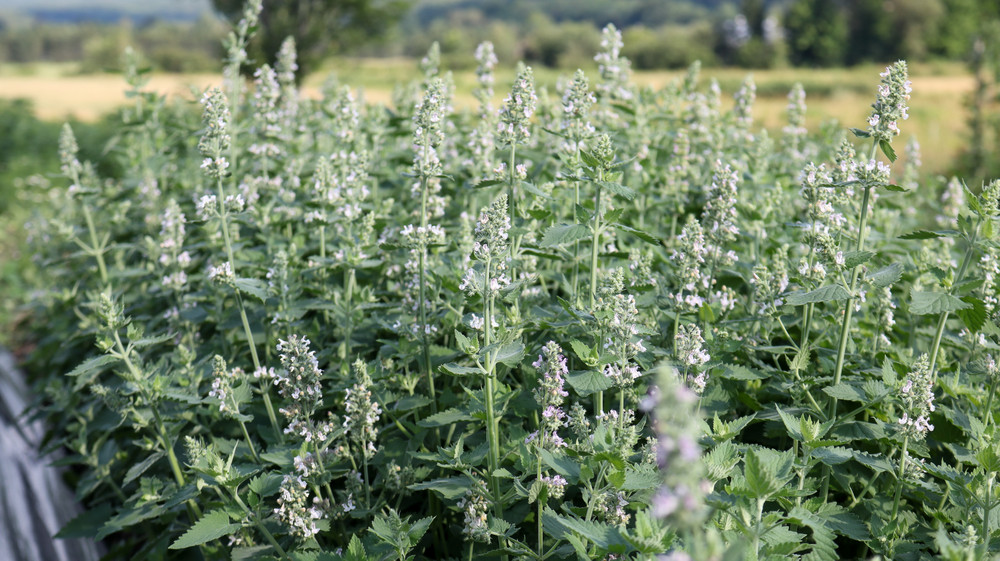
Catnip works similar to Neem oil in that you can use it in your yard, garden and in your home.
You can buy catnip powder at your local co-op or grocery store or on Amazon here and then sprinkle it inside your house, and in your yard and garden.
If you have a recurring problem, which stink bugs frequently are, consider growing your own catnip to use. You can easily dry it and crush it up to make your own catnip powder.
9. Lemon juice and vinegar

Combine an ounce of lemon juice to half an ounce of vinegar (any type although standard vinegar is cheapest and arguably the best for this purpose) in an 8-ounce container with water.
Shake it well to mix thoroughly, and then directly spray it on your windows, walls, cracks, crevices and other areas stink bugs tend to appear.
10. Chili-based spray
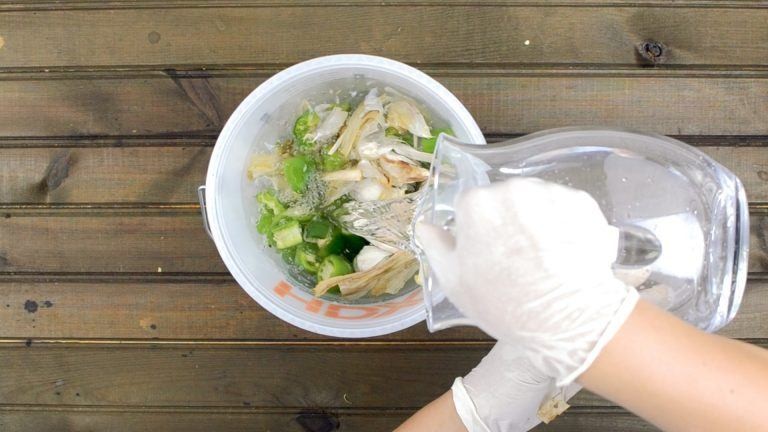
This powerful DIY spray is remarkably effective for eliminating stink bugs. You’ll need two of the strongest variety hot peppers you can find, a clove of garlic and two large onions.
Chop up the peppers, onions, and garlic and mix them together with a quarter of soapy water in a large lidded pot. Cover it up and allow the mixture to sit for 24 hours.
After that period, strain it and then pour the liquid into a spray bottle. You can use the spray as you would some of the others – on any areas where stink bugs enter. The solution will be effective for as long as two weeks, provided it’s kept sealed and stored in a dark place.
11. Pyrethrum spray

The flowering plant pyrethrum, a member of the chrysanthemum family, is highly poisonous to many pests, including stink bugs, and it’s easy to grow from seed.
If you have some in your garden, you’ll have your own stink bug fighter right at your fingertips.
To use them, hang the flowers upside down to dry in a dark place. Once they’re dry, pulverize them into a fine powder. Combine about a third of an ounce of the powder with 3 quarts water. Allow the solution to sit for at least three hours before using, again, in a dark place.
When you’re ready to use it, add a teaspoon of dish soap, and then pour all of the liquid into a sprayer. This solution will kill stink bugs upon contact with any area that’s sprayed.
12. Pheromone Traps
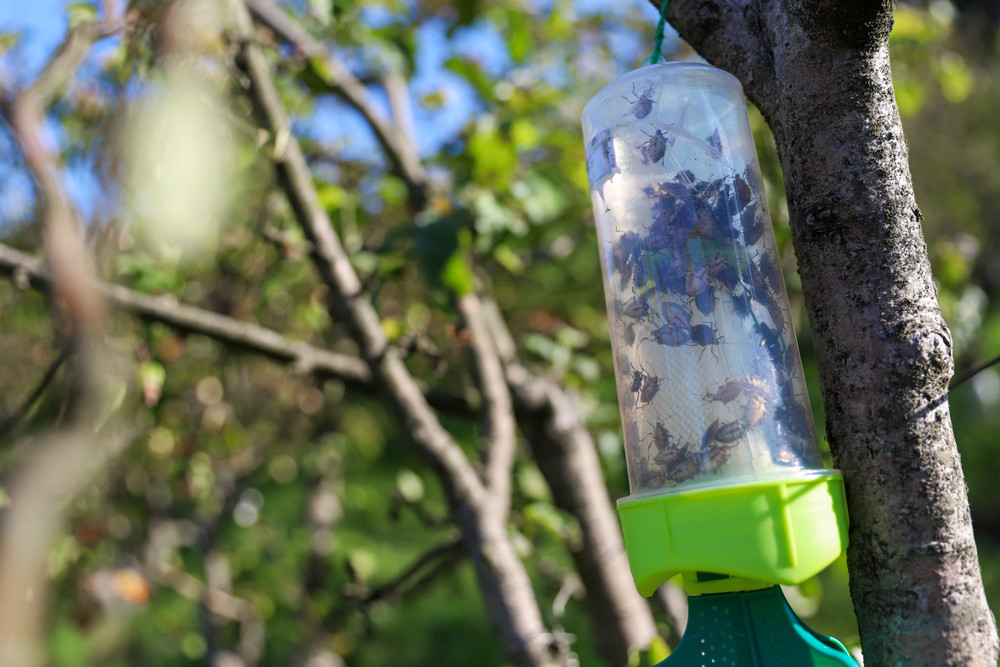
Another option for those who are suffering from a big stink bug problem, with the population appearing to be rather large scale, it can be well worth investing in pheromone traps.
The traps don’t use any chemicals but attract the bugs by using a synthetic version of stink bugs’ naturally occurring pheromones, substances that are produced by the insects to help them find each other.
The bug will be lured into the trap and will die of dehydration. While these traps are very effective, you will have to replace them frequently to keep a stink bug population under control.
